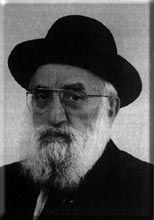Beit Midrash
- Library-Sifria
- Pninei Halacha
- Pesach
In addition to bitul, we also get rid of our ĥametz in fact. The evening of the fourteenth, we search the entire house for ĥametz, and on the day of the fourteenth we eliminate it from our homes.
Although each method independently is sufficient to fulfill the requirements of Torah law, the Sages required that we remove the ĥametz using both methods, to be on the safe side. Thus, we annul the ĥametz orally and physically clear it out of the house. 6
On the one hand, the Sages did not want to rely on the nullification alone, lest some Jews not annul the ĥametz wholeheartedly and subsequently keep it in their homes to eat after Pesaĥ. Since they had not annulled the ĥametz wholeheartedly, they would violate the prohibitions of bal yera’eh and bal yimatzei by keeping it at home (Rashi, Pesaĥim 2a). Moreover, they were concerned lest, if ĥametz remained in the house, people might eat it by mistake. Therefore they also required removing it from the house physically (Tosafot ad loc.).
Similarly, the Sages did not want to rely on the search alone, lest some Jews not succeed in finding all of the ĥametz in their homes, but then find it on Pesaĥ. In that event, there is a chance that they might wait briefly before burning it – because they would feel badly for a moment about losing their ĥametz – and, in that moment, they would violate the prohibitions of bal yera’eh and bal yimatzei. By nullifying the ĥametz before Pesaĥ, however, they would not violate the prohibitions, even if they hesitated a little before burning the ĥametz (MB 434:6). 7
5.The Essence of the Mitzva
A fundamental question arose concerning the essence of the mitzva of removing the ĥametz: is the mitzva essentially to eliminate the ĥametz actively or is the main principle that no ĥametz remains in a Jew’s possession?
According to the view accepted by most Rishonim (Maharik, Ramban, and others), the mitzva is primarily that one’s domain be free of ĥametz. One who has ĥametz must clear it out, and one who has no ĥametz in his domain has already fulfilled the mitzva.
However, some Rishonim (Ran, Tosafot) imply that only someone who has ĥametz becomes obliged to fulfill the mitzva, and he fulfills it by clearing the ĥametz out of his house. One who has no ĥametz is exempt from the mitzva. Yet even according to this approach, we do not find that the Rishonim recommended acquiring ĥametz in order to fulfill the mitzva of removing the ĥametz. Nevertheless, there are Aĥaronim who wrote that it is appropriate for one who has no ĥametz in his possession before Pesaĥ to go beyond the letter of the law and buy some ĥametz, so that he may fulfill the mitzva of removing the ĥametz according to those who hold that one must actively remove ĥametz. 8
In practice, Jews are a holy people and strive to perform the mitzvot in the most praiseworthy fashion, including making sure that they have ĥametz on the fourteenth of Nisan, which they use to fulfill the mitzva of removing the ĥametz in a way that satisfies all views. Moreover, they are so scrupulous as to remove the ĥametz specifically by burning it, for, according to many poskim, burning is the preferred way to destroy the ĥametz (see below 5:4).
^ 6.. According to the majority of poskim, on the Torah level one method of destroying the ĥametz is sufficient: either by nullifying the ĥametz or by searching for and destroying the ĥametz. The Sages decreed that one must use both methods, as I wrote above (1:1), in the name of Ran and as cited in Beit Yosef §432. However, it seems that according to Tur, the Torah’s primary method is bitul, and the Sages added that one must also search for and destroy all ĥametz, because of the reasons presented above.
^ 7.. To expand on this topic: According to Rema in 434:5 in the name of Tur, if one thoroughly checks his house and yet still an olive-sized piece of ĥametz remains, he violates the prohibition of bal yeira’eh and bal yimatzei. (This is why, according to Rema, the main and most important "removal" of ĥametz in the Torah’s eyes is mental nullification.) However, according to many other poskim, including Rambam and Rosh, anyone who checks his house properly, even if he does not succeed in finding every last bit of ĥametz, does not violate any prohibitions for unintentionally having ĥametz in his house, since he did a proper and thorough check. Only if one finds ĥametz in his house on Pesaĥ and intentionally leaves it in his house because he wants the ĥametz, would he violate any prohibition. Moreover, according to Taz, even Tur is of this opinion, as I have written above.
^ 8.. Minĥat Ĥinukh §9 discusses the different sides of the issue at length and notes that according to Rashi, Rambam, and Sefer Ha-ĥinukh, the mitzva is passive (this is also the opinion of Maharik in §174 and Ramban at the beginning of Pesaĥim). According to Tosafot and Ran, however, the mitzva is an active one, and so according to this opinion, one who has no ĥametz in his possession should purchase ĥametz in order to fulfill the mitzva of destroying it. R. Ĥayim Soloveitchik offered a novel interpretation, namely, that this dispute hinges upon the dispute between the Sages and R. Yehuda regarding the method of destroying the ĥametz: according to R. Yehuda, the mitzva is specifically to burn the ĥametz, whereas according to the Sages, any act of destruction works. Those who follow R. Yehuda’s opinion, therefore, would hold that one must do a positive action to fulfill the mitzva of destroying the ĥametz; and this needs further study. See also Piskei Teshuvot 445:6 which mentions several Aĥaronim, among them the authors of Ĥelkat Yo'av and Mekor Ĥayim, and Maharash Engel, who maintain that there is a mitzva for every person to own ĥametz in order to destroy it; conversely, SAH (436:21), Divrei Ĥayim (1:9), Ĥavot Ya’ir (§4), and Avnei Nezer (OĤ 318) maintain that there is no mitzva to obtain ĥametz in order to destroy it. As mentioned, the custom is to actively destroy some ĥametz to fulfill this mitzva according to all opinions. Indeed, MB (445:10) states that it is proper to leave a kezayit of ĥametz in order to destroy it actively and fulfill the mitzva of destroying the ĥametz.
The reason we have written that one needs a kezayit of ĥametz to fulfill this mitzva is that according to many poskim only an olive’s bulk must be destroyed (see MB 442:33). Even according to those who adopt the stringent view that less than a kezayit must be destroyed, this is probably because of the concern that one may come to eat it and violate the prohibition of eating ĥametz, which applies even to a piece smaller than an olive. According to the overwhelming majority of poskim, however, there is no Torah prohibition of bal yeira’eh and bal yimatzei on a piece of ĥametz smaller than an olive (see Dagul Mei-rvava §442, Ĥakham Zvi §86, and Sha’agat Aryeh §81). This is significant since most authorities believe that the mitzva to destroy the ĥametz is connected to the prohibition of bal yeira’eh and bal yimatzei, not the prohibition of eating the ĥametz. See also Sidur Pesaĥ Ke-hilkhato 15:4, which states that one should not pour lighter fluid on the ĥametz itself at the time of burning; rather, he should pour it onto the wood, so that the ĥametz is destroyed by fire itself and not ruined by the lighter fluid. Hilkhot Ĥag Be-ĥag 8:10 n. 17 explains that there is no reason to be stringent about this, since the main point of the burning is to turn the ĥametz into ashes, regardless of whether or not the taste of the ĥametz is ruined.
























